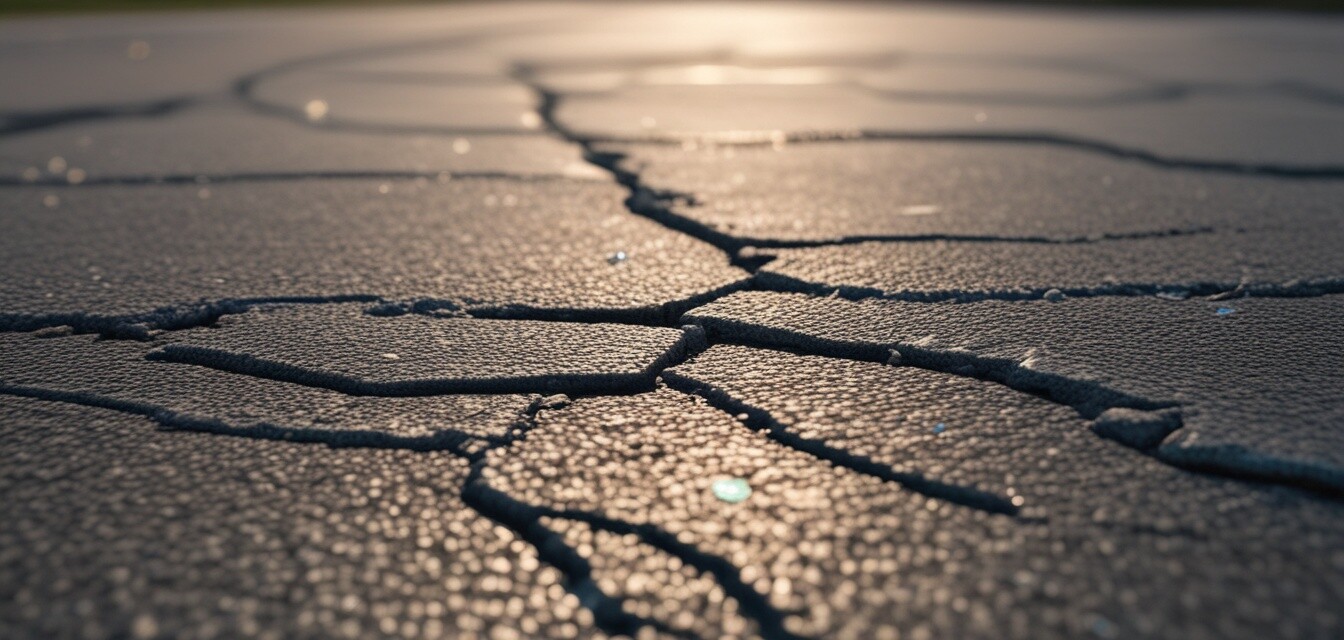
Preventing Water Damage in Asphalt Surfaces
Key Takeaways
- Water can cause significant damage to asphalt surfaces.
- Regular maintenance is crucial for preventing water-related issues.
- Effective sealing can enhance the longevity of asphalt.
- Proper drainage systems help mitigate water accumulation.
- Timely repairs can prevent minor issues from escalating.
Asphalt surfaces are widely used for roads, driveways, and parking lots, but they are vulnerable to water damage, which can lead to costly repairs and reduced performance. Understanding how to effectively prevent water damage is essential for anyone involved in asphalt paving, whether you're a contractor or a homeowner. This guide will provide you with practical strategies and techniques for maintaining your asphalt surfaces and ensuring their longevity.
Understanding Water Damage in Asphalt
Water damage in asphalt surfaces occurs when water seeps into cracks and potholes, causing them to expand and worsen over time. Common signs of water damage include:
- Cracking
- Potholes
- Pooling water
- Discoloration
How Water Affects Asphalt
Water can penetrate the asphalt surface through tiny cracks, leading to the following issues:
- Freeze-thaw cycles: When water freezes, it expands, pushing against the asphalt, which can cause cracks to widen.
- Soil erosion: Water pooling can erode the soil beneath the asphalt, leading to sinkholes and instability.
- Reduced lifespan: The presence of water can significantly decrease the lifespan of asphalt, necessitating early replacement.
Strategies for Preventing Water Damage
Implementing preventative measures is critical for maintaining asphalt surfaces. Here are some key strategies:
| Strategy | Description | Benefits |
|---|---|---|
| Regular Inspections | Inspect your asphalt surfaces for cracks and damage at least twice a year. | Early detection of issues helps in timely repairs. |
| Effective Drainage Systems | Ensure proper grading and drainage to prevent water accumulation. | Reduces the risk of erosion and pooling water. |
| Sealing | Apply a high-quality sealant every few years. | Protects against water penetration and UV damage. |
| Immediate Repairs | Repair cracks and potholes as soon as they appear. | Prevents issues from escalating and prolongs surface lifespan. |
| Proper Installation | Ensure asphalt is installed by professionals using the right techniques and materials. | Creates a durable surface designed to withstand weather conditions. |
Maintaining Drainage Systems
Maintaining adequate drainage systems is crucial for preventing water damage. Follow these best practices:
- Clear debris: Regularly clean gutters, drains, and catch basins to ensure unobstructed flow.
- Install drainage pipes: Use buried drainage pipes to redirect water away from asphalt surfaces.
- Grade your surface: Ensure that your asphalt surface is properly graded to allow water to flow away from it.
Sealants and Their Importance
Using sealants can significantly enhance the durability of asphalt surfaces. Here’s why you need them:
- Sealants create a protective barrier against water and UV damage.
- They fill in small cracks, preventing them from expanding.
- Regular sealing can prevent the need for costly repairs.
Choosing the Right Sealant
When selecting a sealant, consider the following:
Tips for Beginners
- Look for sealants that are specifically designed for asphalt.
- Follow manufacturer instructions for application to ensure optimal performance.
- Choose sealants that are rated for your climate conditions.
Key Maintenance Practices
In addition to sealing and drainage maintenance, regular upkeep is essential. Here are some practices to consider:
- Regularly remove leaves, dirt, and debris.
- Check for stains and spills that could damage the surface.
- Keep an eye on vegetation to prevent roots from lifting the asphalt.
Conclusion
Preventing water damage in asphalt surfaces is crucial for maintaining their integrity and extending their life span. By following the strategies outlined in this guide and remaining proactive about maintenance, you can ensure that your asphalt surfaces perform well for many years. Remember to routinely check your surfaces, reinforce them with proper sealing, and maintain drainage systems to keep water at bay.
Pros
- Cost-effective maintenance extends asphalt lifespan.
- Proactive approaches prevent expensive repairs.
- Improved safety with reduced risk of water-induced damage.
Cons
- Initial cost of sealing and drainage systems.
- Ongoing maintenance required to prevent issues.
For additional insights on asphalt paving techniques, be sure to check out our buying guides and learn more about sealants and crack fillers that can protect your surfaces. Explore our collection of asphalt pavers and rollers to ensure professional results in your paving projects.

